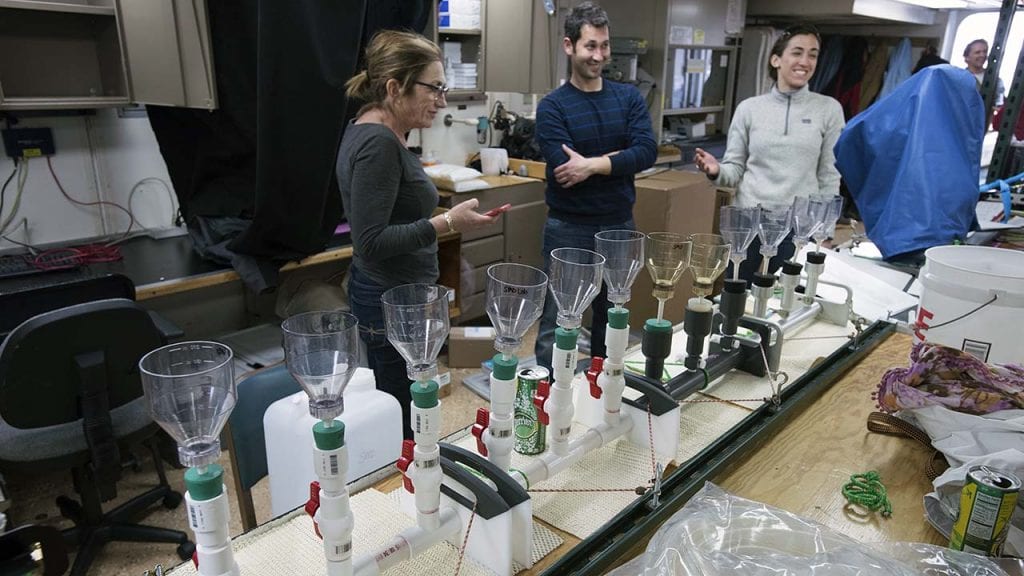Researchers from the University of Rhode Island prepare the main lab of R/V Atlantis for a cruise to the North Atlantic, where a multi-institutional team will study Earth’s largest concentration of microscopic marine plants, known as phytoplankton. This series of funnels will be part of experiments to examine how tiny marine animals called microzooplankton affect growth of the phytoplankton they feed on. Funded by NASA, the North Atlantic Aerosols and Marine Ecosystems Study (NAAMES) is looking at the relationships between these massive phytoplankton blooms, marine aerosols, and global climate.(Photo by Tom Kleindinst, Woods Hole Oceanographic Institution)
Image and Visual Licensing
WHOI copyright digital assets (stills and video) contained on this website can be licensed for non-commercial use upon request and approval. Please contact WHOI Digital Assets at images@whoi.edu or (508) 289-2647.
